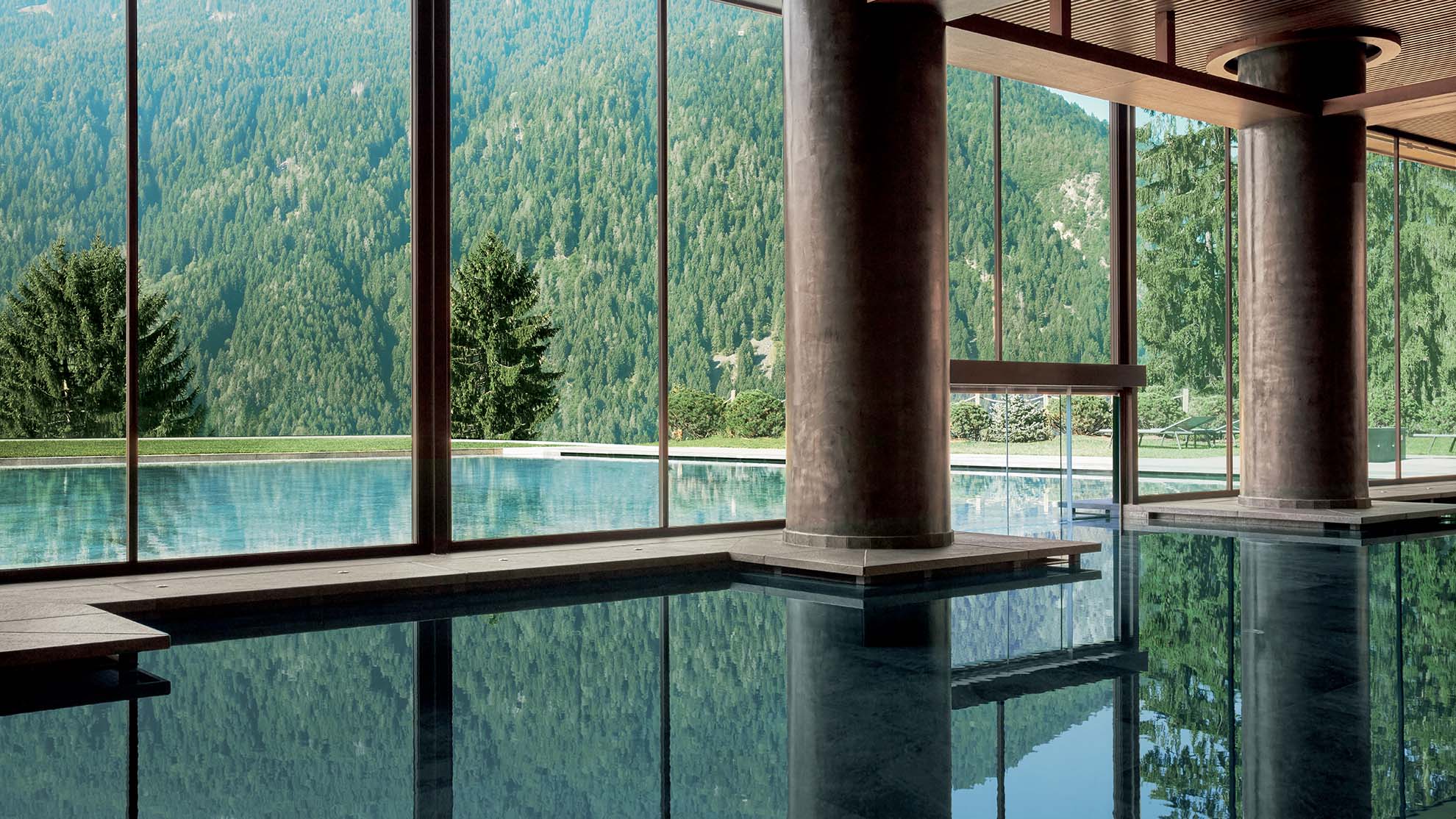
Architect and spa designer, Alberto Apostoli, shares the three most important elements to consider when designing a spa.
Alberto Apostoli is an architect and spa designer. Born in Verona in 1968, he studied architecture at the University of Venice, then studied and worked throughout different European countries, before founding his own design firm in 1997.
He has designed products and projects for various brands and his spa and hotel work includes Lefay Resort & Spa Dolomiti, Four Seasons Moscow, and Terme Preistoriche Resort & Spa.
Apostoli seeks inspiration in the surroundings of whichever he happens to find himself. He says, “I am interested in the different cultures of the world; in my view, being Italian means being hungry for beauty wherever it may be found.”
Wellness design, he says, “represents for me the culmination of my professional research because it is a synthesis of architecture, culture, philosophy and the ability of a project to speak to the body, mind and soul of people, … a way to speak of technology and poetry at the same time.”
He explained that the projects he develops “always aim to address well-being, sometimes overtly, other times more subtly,” but it is this approach that defines the uniqueness of his work.
Sustainability is also a key component of Apostoli’s work and has assumed a primary role “because it is inextricably linked to the concept of wellbeing for the planet, which is indispensable for the wellbeing of people.”
Here, Alberto Apostoli talks about designing for wellness in 2022 and the most important elements to consider.
 How things have changed in spa design over the last couple of decades
How things have changed in spa design over the last couple of decades
The entrepreneur has moved on from the perception of the spa area as mere facility or amenity and today understands the strategic value in wellness on the market and as an element on which an entire idea can be built. Spas can have a life of their own and constitute important businesses in their own right, whereas before they were more of an afterthought or add on.
The customer of today is also more mature than the customer 15 or 20 years ago. A savvy consumer can recognize different types of spas and wellness options and recognize quality.
Design should evolve to keep pace with the business expectations of both consumers and stakeholders. A spa is an all-important space, the design of which deserves as much consideration as the hotel or resort where it is housed. And, in fact, may even be the seed out of which the rest of a property concept grows.
Each spa is a unique concept of wellbeing
There are three main elements I consider. The first is place. When designing a spa space, one must do a determined, precise and accurate analysis of the location. Wellbeing is subjective, not objective, and therefore the environment must be understood from a territorial and climatic point of view (as well as the cultural, social, religious and historical resources it possesses). Each spa becomes a search for the unique concept of wellbeing that an area can provide.
The second element is sustainability: the strategies, methodologies and elements that can create a sustainable spa. The third element is the management aspect: how the spa will be managed, how customers will move, how the staff will move, maintenance, cleaning, and so forth. Creating a spa is like painting a work of art; you need to understand where the artwork will be placed, where it will be exhibited, the subject, the way in which the customer will observe the picture, and so on.
Technology as the beating heart
The technology within the spa is the equivalent of the engine in the automotive sector. It is the beating heart. It’s mandatory for a spa designer to know the techniques, results and expectations in terms of systems (from a thermal, thermo-fluidic, and hydro-thermal point of view, the control of lights, the sensory part, music, sounds, etc). The technology is used to power the engine but also to create a mood and a multi-sensory experience that today is the basis of every spa project.
How design impact the staff as well as the guests
Unfortunately, the standard approach of a designer is to design something only for the customer. The guest must be able to move with a fluidity and comfort inside the spa. There are many factors to take into account regarding the guest: they walk barefoot or in slippers, they are often in a darker environment than normal, often without glasses, are not wearing clothes, and so forth. So, the design has a substantial impact. Creating wellness is not only about aesthetics but also the use of design elements that help and make the guest feel at ease.
The staff must be able to move just as well in the structure, without hindering the guest’s paths and must be able to experience the wellbeing even if in a different form. It’s important that all of these considerations are taken together to create whole experiences for both guests and staff.
The importance of nature and water elements
Nature is the mother of wellbeing. Man is an animal, a living being and a social animal. Nature cannot and must not be relegated to a marketing value, but must be used for its logical function. Within the natural world, water is obviously essential. As Thales, one of the most important pre-Socratic philosophers, said “water is the origin of all things.” Water can be perceived in the air content, becoming humidity; and it’s also fundamental to our perception of temperature. Water is therefore essential in spas even when it seems not to be, and since humans are made of 70% water, they absolutely cannot help but consider it.
Water in all its three states – liquid, solid, and gas – is important in the spa. The perception that people have of water inside the spa is very complex. Not all of us react well to the humidity of a Hammam, a Turkish Bath or a Sauna; but it is understood that water in all its three states – liquid, solid, and gas – is important in the spa.
During the design phase it should be understood how the water moves and will be used. I try to understand the repercussions that water has on individual spaces. Water in all its forms is important, but a specific analysis must be made.
Watch Book4Time’s Spa Leader Masterclass with Albert Apostoli on our YouTube channel!
Read also: Bill Bensley on how design impacts the guest experience.
Spa Executive is published by Book4Time, the leader in guest management, revenue and mobile solutions for the most exclusive spas, hotels, and resorts around the globe. Learn more at book4time.com



